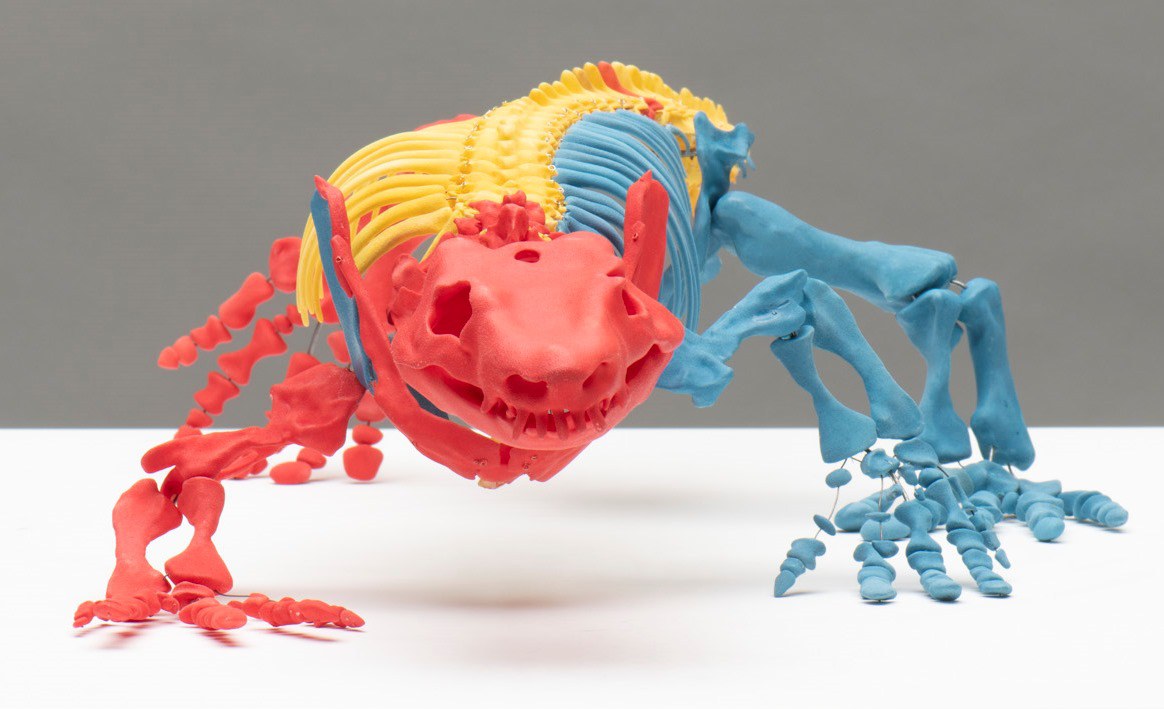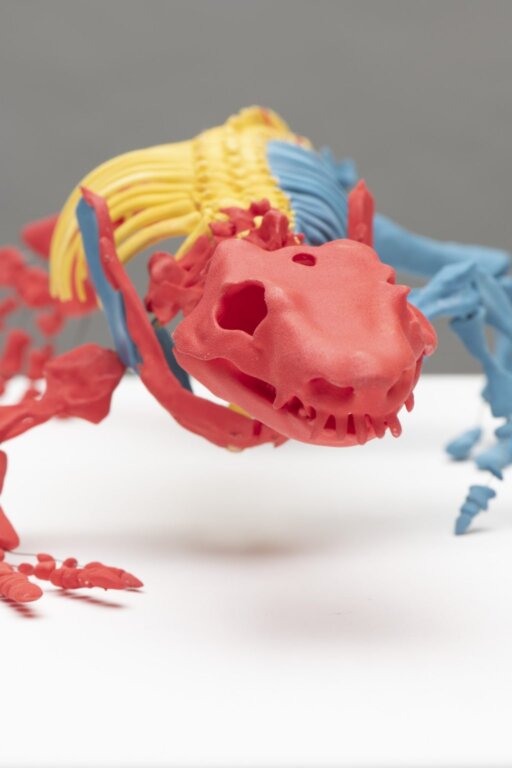Orobates pabsti lived 300 million years ago. Using a 3D model of its skeleton, the Humboldt Labor demonstrates what cutting-edge modern research looks like. Researchers reconstructed how the proto-dinosaur moved around.
With its yellow backbone, red head and two blue feet the model of Orobates pabsti, unlike the pale dinosaur skeletons in museums, shines brightly in several colours. There is a reason for that. Reminiscent of a reptile, the model that will be on show in the Humboldt Labor typifies how scientists work, says John Nyakatura, Junior Professor of Morphology (Zoology) and the History of Forms at the Humboldt-Universität. “The assembled skeleton exemplifies our approach to reconstruction and shows that we are transparent in dealing with uncertainties,” says the biologist who, together with the Swiss EPFL Biorobotics Laboratory in Lausanne, investigated how the dinosaur moved around.
The nearly 300-million-year-old Orobates pabsti fossil was found in the Thuringian forest. Starting with the surviving fossilised bones, research scientists sought to find out what the proto-dinosaur’s complete skeleton looked like – in order to discover how it moved around.

